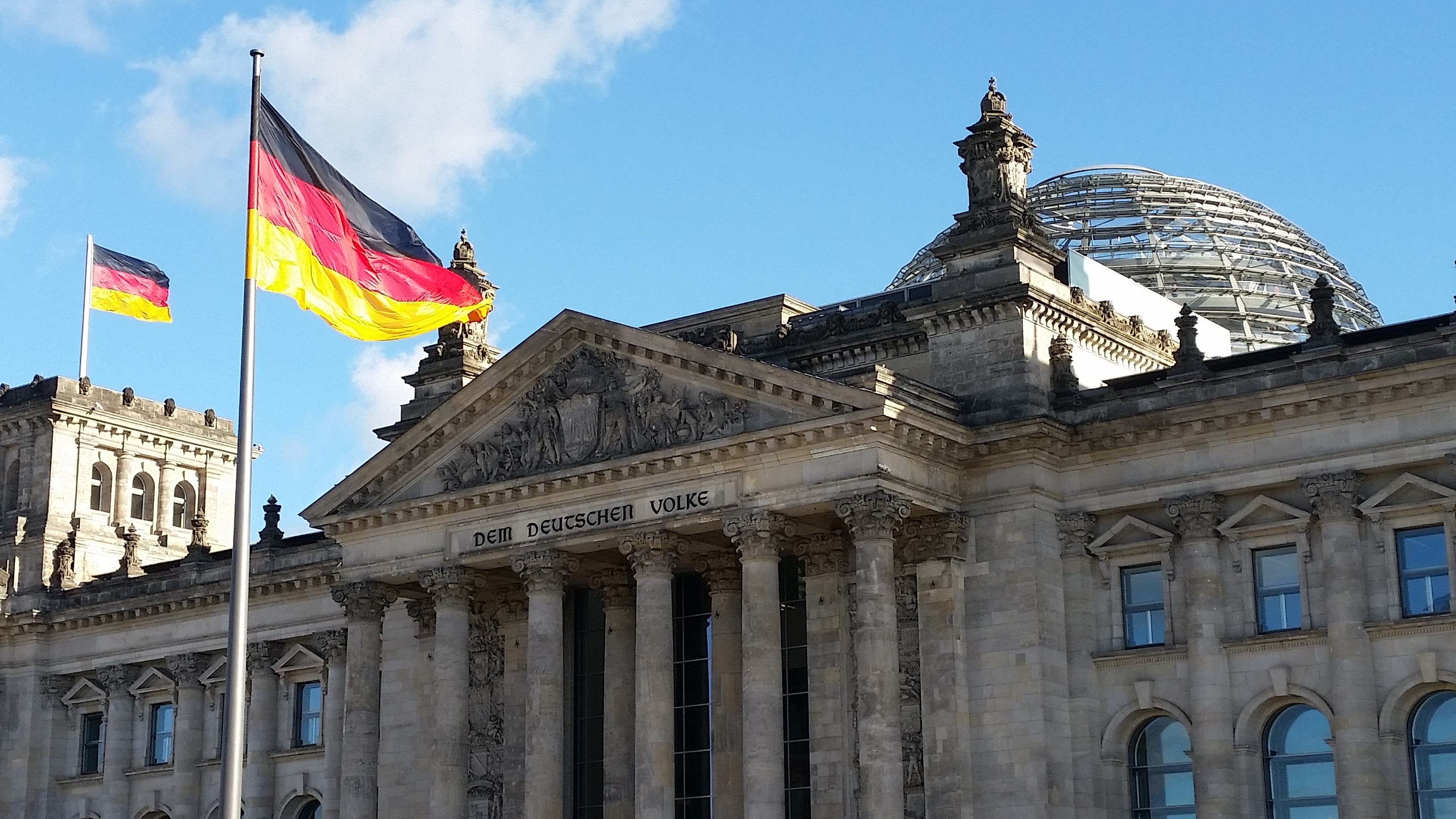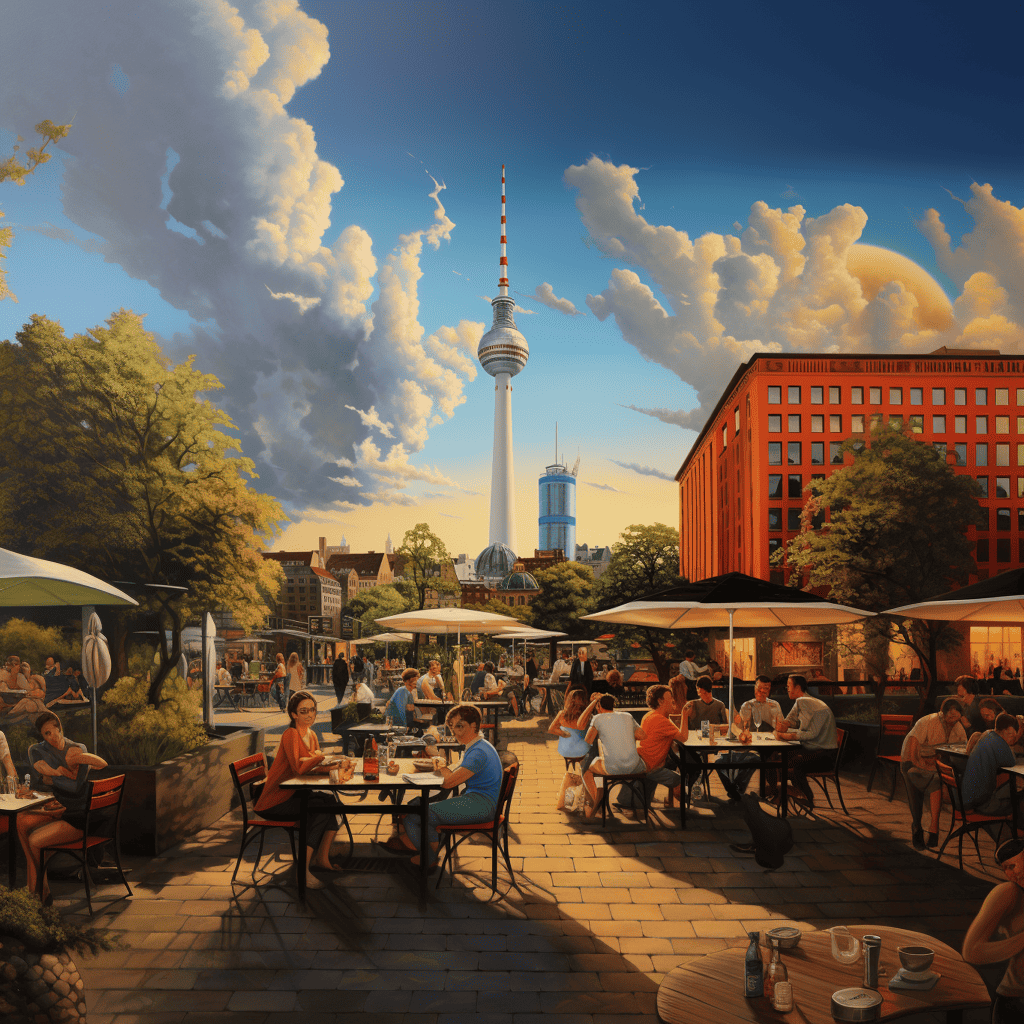
In Germany this summer, you can travel on regional public transport for 9 euros a month. Innovation Origins takes the opportunity to visit a number of future-oriented projects. In this episode, we travel to the IdeenExpo in Hannover.
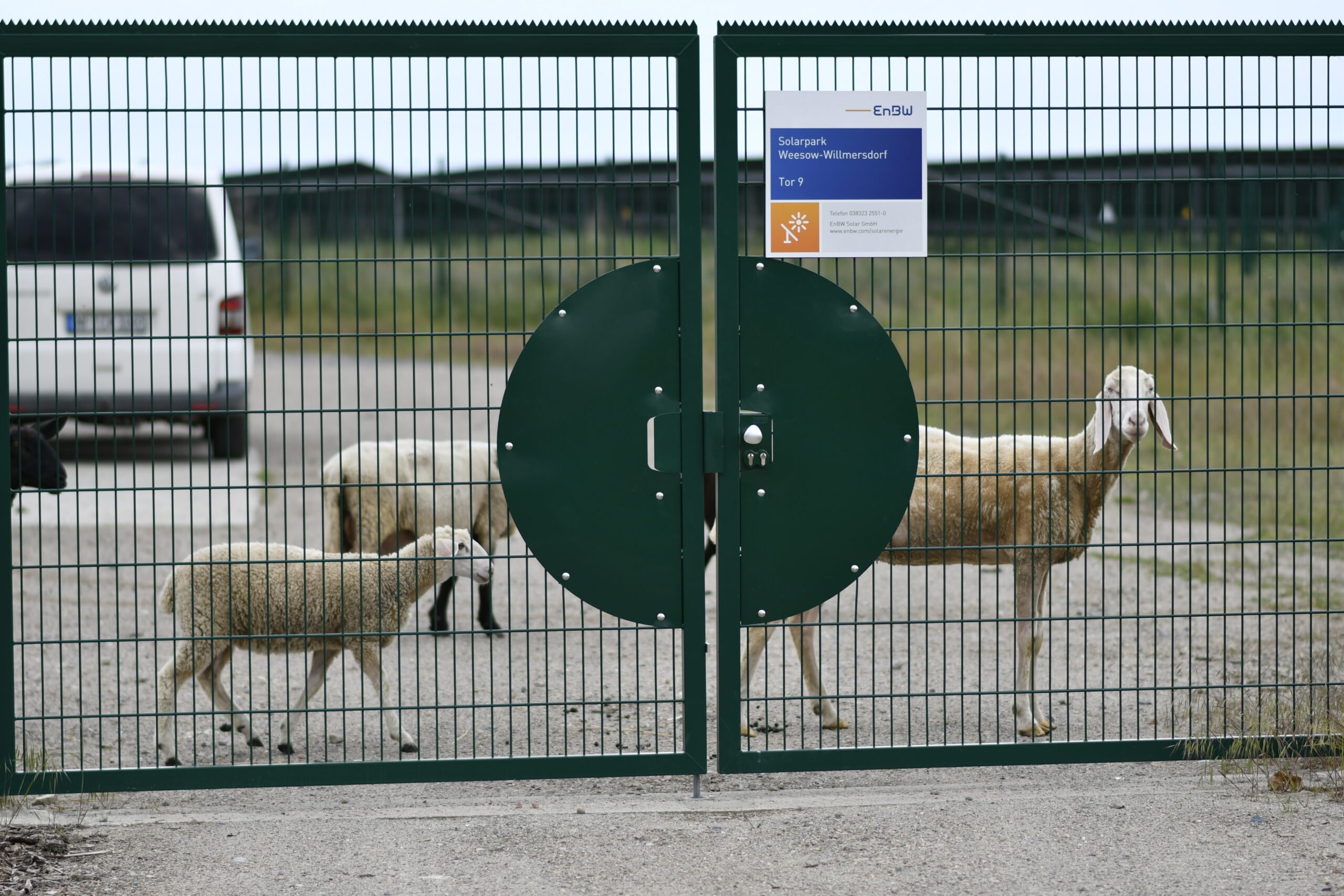
In retrospect, it was a stupid idea. Taking the local train from Berlin to Hanover. That can’t go well. And indeed, right on the first train to Rathenow, it goes wrong. “Signal failure”, it sounds through the speakers. The result is a delay of three-quarters of an hour and I miss the connection to Stendal. The only option is to spend an hour and a half of hanging around in the “Stadt der Optik”.
“Young and dynamic”, it says on the website of Rathenow, which is generally regarded as the birthplace of the German eyewear industry, at the beginning of the nineteenth century. But those are long gone times, for Rathenow is now mostly sad and drab.
The only uplifting thing about the center is the stones with sayings about freedom in front of the regional government office. Furthermore, at the market, they sell one of the best “Fischbrötchen” ever. The fishmonger says that the part of the city along the river Havel is the most beautiful, but there is no time for that.
Hundertwasser

The rest of the trip went reasonably smoothly with two more changes in Stendal and Uelzen.
Uelzen in particular is funny because of the “Harry-Potter-meets-Gaudi-like” station full of strange ornaments and platforms with crazy numbers. It was designed by Austrian artist and architect Friedensreich Hundertwasser.
In Hannover, we finally reach our destination after more than 7 hours of traveling. All that remains is to change to the streetcar to the fairgrounds and then on to the IdeenExpo 2022.
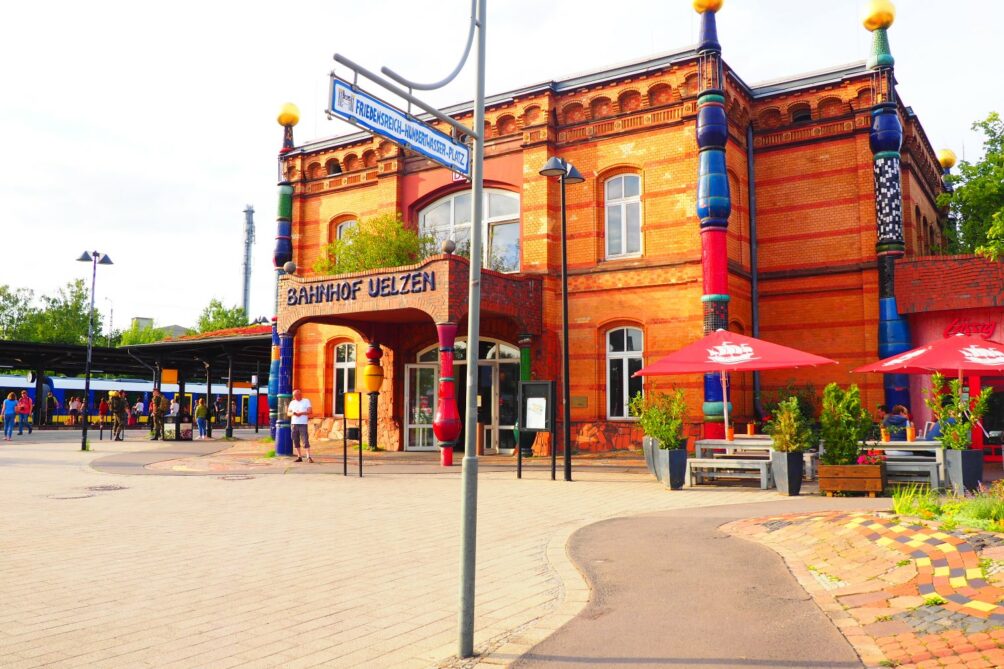
The Hannover Fair
This is not the best-known trade fair in Hannover. That’s the Hannover Messe where international industry companies tout their best machines, software, and other devices. At the IdeenExpo, held last week, it’s also all about technology. Only the target group is different. The IdeenExpo focuses exclusively on young people between the ages of 10 and 20.
It is a fair that has existed since 2007 and has everything to do with a problem that has now spread throughout Europe: a shortage of technically trained personnel.
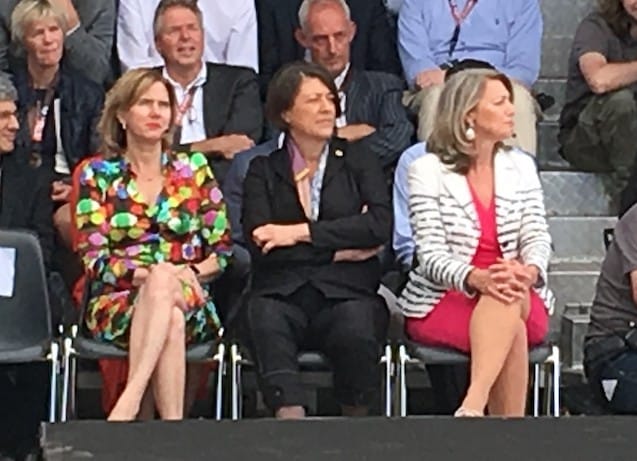
At the fair, we see all kinds of things. There are craftsmen’s schools, colleges, universities, and research institutes showing what they have to offer. But the majority of the stands are occupied by companies that try to convince young people that working for them is the coolest thing ever.
From aerial work platforms to robots
At the fair, the students can mint their own coins, cut tiles, create a mini-roof garden, learn how self-driving cars work, experiment with solar panels, travel with a cherry picker, try out 3D glasses and participate in dozens of workshops. All of this is supervised by so-called Azubis, young adults who combine further education with work within a company.
It seems to be bearing fruit because there are happy faces everywhere at the fair. It is striking that there is no great difference between boys and girls. They are both enjoying themselves, are present in equal numbers, and are just as interested.
That is exactly the intention of the organizers because even in Germany there are still too few girls who choose science subjects such as physics, mathematics, and chemistry.

The IdeenExpo is strongly linked to an initiative by German employer associations to create so-called MINT schools. These are schools that value mathematics (Mathematik), computer science (Informatik), physics (Naturwissenschaften), and technology (Technik).
The first schools came about 14 years ago. In the meantime, there are (as of 2019) 19 secondary schools that have received the highest designation of “Wissensfabrik” and over 2,000 “MINT-friendly” schools.
DLR
An employee of the German aerospace organization DLR says he is pleased with the IdeenExpo. “We are short of hands and that will only get worse in the future.” He does regret, however, that in recent years the Expo has become primarily a showcase for companies. As a result, science has been pushed a bit into the background.
According to Volker Schmidt, chairman of the Expo’s Supervisory Board, the fair is of great benefit to society. First, young people can get an idea of whether they would rather study or work with their hands. Schmidt: “Both are equally important. Without the MINT professions, smart homes cannot be built in the future – or low-emission heating systems.”
Mike Schneider, from the Lower Saxony Chamber of Commerce, emphasizes that there is also good money to be made in technical professions. “And the job security is high.”
Enough vacancies
According to Martin Leutz, spokesperson for the industry association Gesamtmetall, the personnel shortage has only increased in recent years. “Within the metal and electrical sector, around 10% of apprenticeships and workplaces for “Auszubildende” cannot be filled, and have not been for years.” According to him, this also has to do with demographic trends. In 2001, there were 688,000 people taking final exams, in 2021 there will only be 461,000. That’s a drop of more than 30%.
“That’s why the IdeenExpo is so important to us. You cannot underestimate how important it is to show schoolchildren in practice what lies behind certain work. The great thing is that there are not only personnel managers here but also trainees who can tell visitors at eye level about their experiences and why they are so enthusiastic about what they do.”
One of Leutz’s favorite booths at the show, he says, was one from Siemens with a model of a container loading system. The Azubis told him that they had developed special software that reduced container sway. No mean feat when doing precision work like loading a ship. “I like that. It’s exciting and practice-relevant at the same time.”
Research boat
Incidentally, it is not only the IdeenExpo that is engaged in educating young people. For example, Gesamtmetall is on the road with a bus visiting schools to provide practical education.
Also very interesting is a boat sailing through Germany this summer with scientists from major research institutions such as Max-Planck, Fraunhofer, and Leibniz on it. This boat, by the way, is certainly not only for schoolchildren but also for adults with regular lectures on the latest in science. Fraunhofer also has its own permanent public knowledge center in Nuremberg, Bavaria. “Das offene Innovationslabor” Joseph.
New record
The event in Hanover was festively closed yesterday. The organizers expressed their satisfaction with an estimated 425,000 visitors who visited one or more times during the past week.
On the way back home, I choose to take the express train after all. The estimated travel time is just over 2 hours. It becomes 2 hours and 45 minutes because of a detour via Braunschweig. One thing is certain, the German rail network could use a few billion in additional investment.



